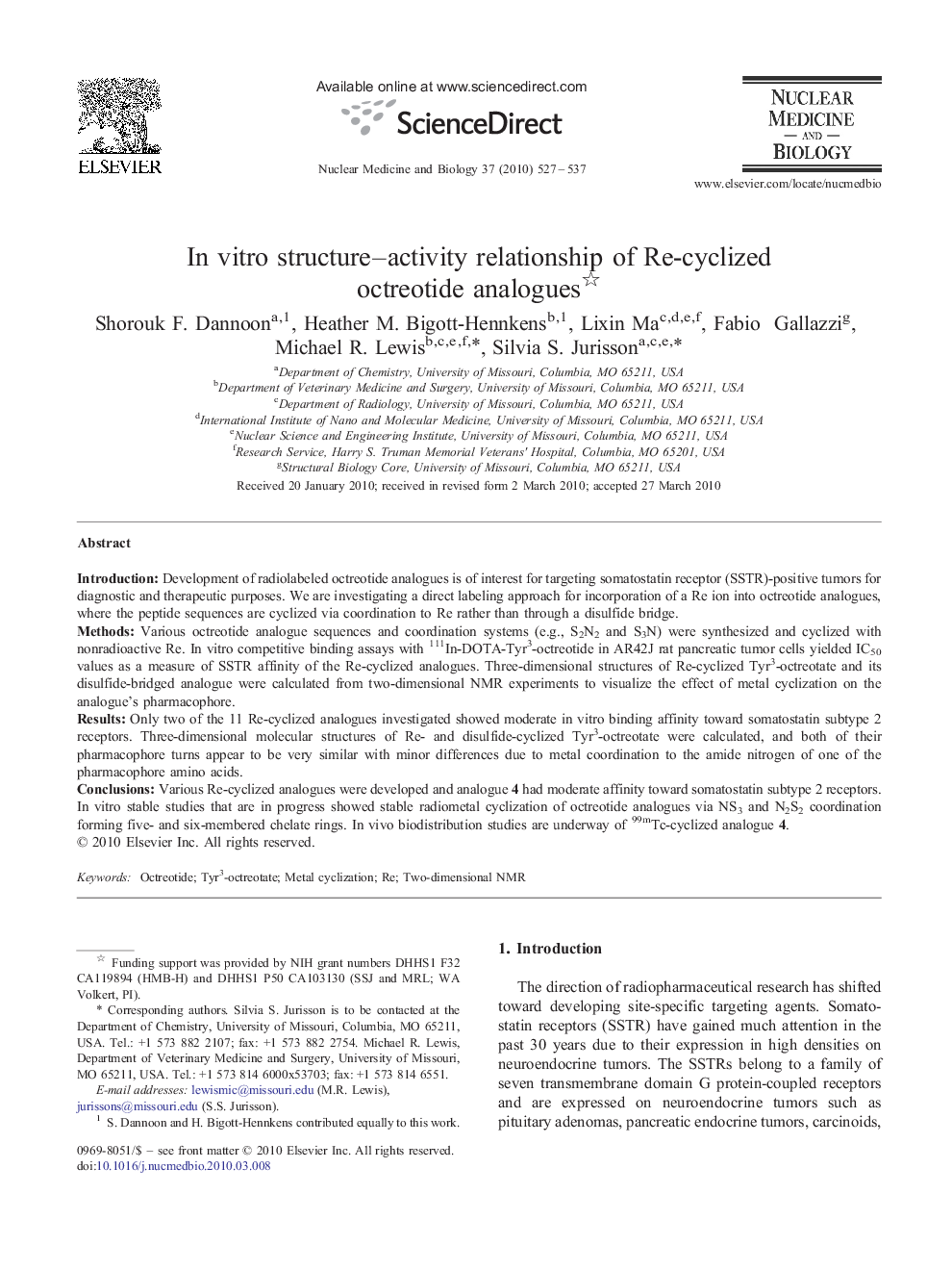| Article ID | Journal | Published Year | Pages | File Type |
|---|---|---|---|---|
| 2154200 | Nuclear Medicine and Biology | 2010 | 11 Pages |
IntroductionDevelopment of radiolabeled octreotide analogues is of interest for targeting somatostatin receptor (SSTR)-positive tumors for diagnostic and therapeutic purposes. We are investigating a direct labeling approach for incorporation of a Re ion into octreotide analogues, where the peptide sequences are cyclized via coordination to Re rather than through a disulfide bridge.MethodsVarious octreotide analogue sequences and coordination systems (e.g., S2N2 and S3N) were synthesized and cyclized with nonradioactive Re. In vitro competitive binding assays with 111In-DOTA-Tyr3-octreotide in AR42J rat pancreatic tumor cells yielded IC50 values as a measure of SSTR affinity of the Re-cyclized analogues. Three-dimensional structures of Re-cyclized Tyr3-octreotate and its disulfide-bridged analogue were calculated from two-dimensional NMR experiments to visualize the effect of metal cyclization on the analogue's pharmacophore.ResultsOnly two of the 11 Re-cyclized analogues investigated showed moderate in vitro binding affinity toward somatostatin subtype 2 receptors. Three-dimensional molecular structures of Re- and disulfide-cyclized Tyr3-octreotate were calculated, and both of their pharmacophore turns appear to be very similar with minor differences due to metal coordination to the amide nitrogen of one of the pharmacophore amino acids.ConclusionsVarious Re-cyclized analogues were developed and analogue 4 had moderate affinity toward somatostatin subtype 2 receptors. In vitro stable studies that are in progress showed stable radiometal cyclization of octreotide analogues via NS3 and N2S2 coordination forming five- and six-membered chelate rings. In vivo biodistribution studies are underway of 99mTc-cyclized analogue 4.
